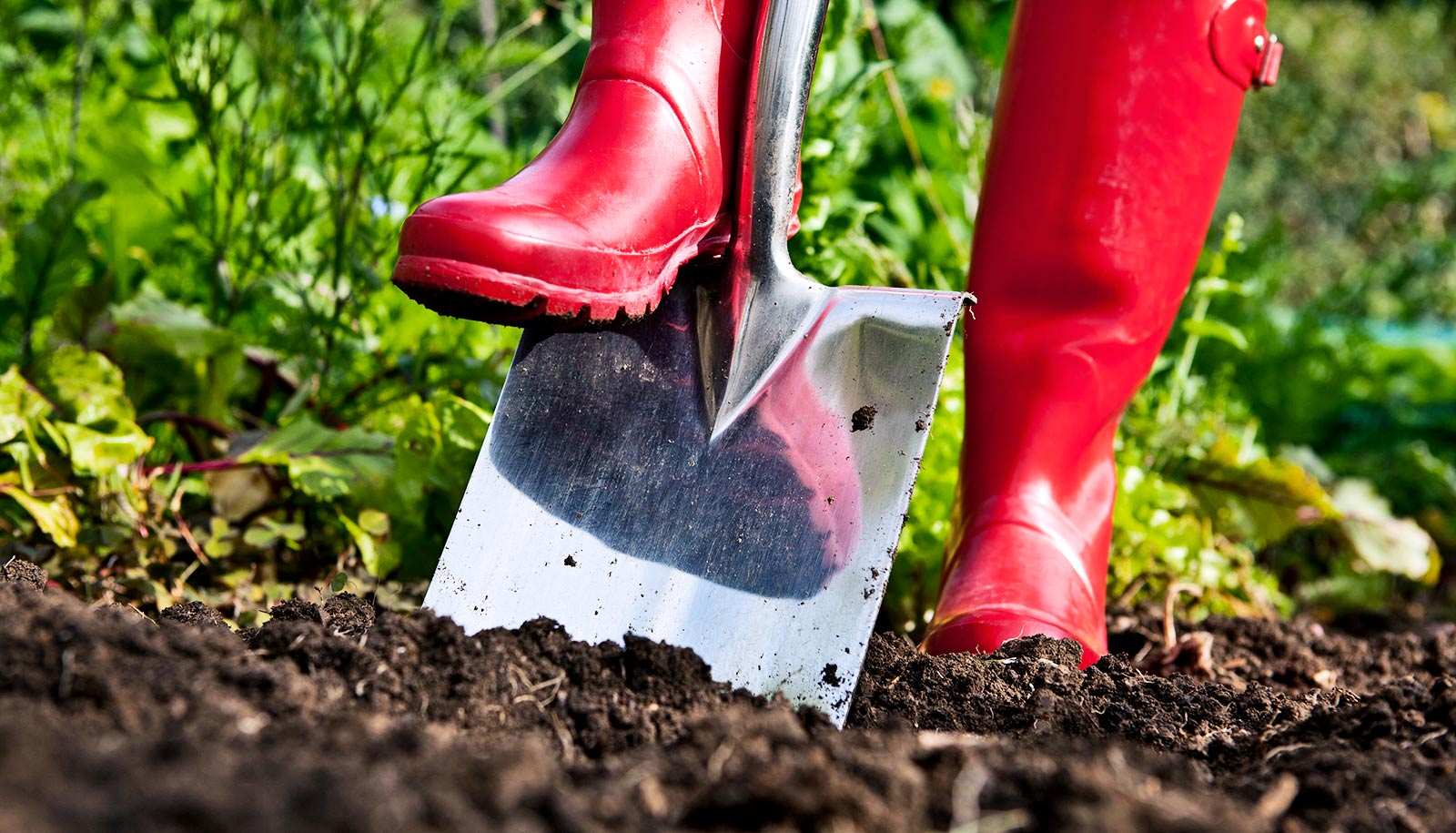The minerals in soil can hold on to a significant amount of carbon pulled from the atmosphere, a new study shows. The finding could prove beneficial as the world tries to shift its carbon economy, researchers say.
“We’ve known for quite a long time that the carbon stored on minerals is the carbon that sticks around for a long time,” says Oliver Chadwick of the University of California, Santa Barbara. How much carbon the soil can take and how much it can keep depend on temperature, moisture, and other factors, he says.
“When plants photosynthesize, they draw carbon out of the atmosphere, then they die and their organic matter is incorporated in the soil,” Chadwick says. “Bacteria decompose that organic matter, releasing carbon that can either go right back into the atmosphere as carbon dioxide or it can get held on the surface of soil minerals.”
‘Water is dear’
Water plays a significant role in the soil’s ability to retain carbon, researchers say. Chadwick and Marc Kramer of Washington State University consulted the National Ecological Observatory Network (NEON) and a globally representative archived data for soil profiles for this first-ever global-scale evaluation of the role soil plays in producing dissolved organic matter and storing it on minerals.
Wetter climates are more conducive to mineral formation that effectively stores carbon, therefore much of the Earth’s estimated 600 billion metric tons of soil-bound carbon is found in the wet forests and tropical zones.
Arid places, meanwhile, tend to have a “negative water balance” and can store far less organic carbon. The findings suggest that even a small, strategic change in the water balance could drive greater carbon storage, Chadwick says.
“That’s not as easy as it sounds, because water is dear.” In places where a shift in soil moisture could tip the water balance from negative to positive—like the desert—there’s not enough water to begin with. “So, it doesn’t actually make any sense to spread a lot of water out over the landscape because water is hugely valuable,” he says.
Climate change is another driver to consider. As the Earth warms, microbial activity increases and, in turn, so does the potential for carbon release back into the atmosphere at a greater rate than photosynthesis can draw it out. Increased evaporation also decreases the amount of water in the soil available to dissolve and move carbon to minerals deep below the surface.
How long will it last?
There is still a lot to investigate and several hurdles to overcome as soil scientists consider ways to tip the balance of the Earth’s soil from carbon source to carbon sink, but understanding this relatively little-known but highly significant carbon storage pathway is a start, the researchers say.
“We know less about the soils on Earth than we do about the surface of Mars,” Kramer says. “Before we can start thinking about storing carbon in the ground, we need to actually understand how it gets there and how likely it is to stick around. This finding highlights a major breakthrough in our understanding.”
Among the next steps for the scientists is to date the mineral-stored carbon in the soil to better understand how long these reactive (typically iron and aluminum) minerals can keep carbon out of the air.
“Which is really important if we’re going to put effort into trying to store carbon in the soil,” Chadwick says. “Is it going to stay there long enough to matter? If we put it in and it comes out five years later, it’s not solving our problem, and we ought to be barking up a different tree.”
The study appears in Nature Climate Change.
Source: UC Santa Barbara



